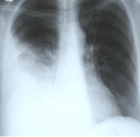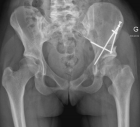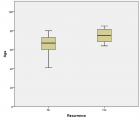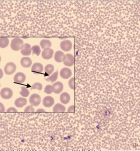Abstract
Research Article
The Effect of Cement and wrapping on the Decomposition rate of the Rabbit Carcasses
Lai Poh Soon*, Khoo Lay See, Nazni Wasi Ahmad, Azlina Zulkapli, Nurul Kharmila Abdullah, Mohd Shah Mahmood and Ahmad Hafizam Hasmi
Published: 16 August, 2017 | Volume 1 - Issue 1 | Pages: 046-062
Taphonomic study was first time conducted in Kuala Lumpur, capital city of Malaysia. In this research model, male Oryctolagus cunicullus weighed 1.8-2.6 kg each were killed by Dolethal intravenously at the ear region. In Phase 1 study, eight subjects were wrapped in a sack and cemented within a container to be compared with the other four controls at each location labelled A (ground) and B (manmade freshwater pond). Phase 2 involved duplicating set of 15 cemented samples comparable to 1 control made up to total of 32 subjects which were all put into a compact polytank containing freshwater to simulate a case study. Taphonomic changes were observed and scored using TBS system incorporating of fresh stage, early decomposition stage, advanced decomposition stage and skeletonisation stage. The ambient temperature of surroundings with 28.81C±4.21°C and 29.21°C±4.57°C (mean±S.D.) while relative humidity of air with 74.49 %±14.61% and 79.15%±16.32% (mean±S.D.) were recorded for Phase 1 and Phase 2 study respectively. Time taken for ground control exposed and wrapped carcasses to reach first sign of skeletonised stage were four days and five days respectively. Whilst freshwater controls reached initial skeletonised stage within one week for exposed carcass and two weeks for wrapped carcass. Within the control and cemented sample carcasses, TBS scores increased from initial stages of decomposition and become plateau after advanced decomposition. The cementing factor have superseded the wrapping factor due to its stronger physical barrier effect to slow down the decomposition more than half compared to controls based on Multiple way ANOVA test. Phase 2 study has demonstrated more accurately on the decomposition rate of the cemented samples. It showed that wrapping and cementing factors have delayed the decomposition process of the rabbit carcasses about 4 times to reach the initial stage of skeletonisation compared to the control carcasses. There was absence of insect activity within the cemented samples, hence the microorganism activity would be the only contributor to the decaying process within the cemented samples at slower rate comparing to the exposed or wrapped controls.
Read Full Article HTML DOI: 10.29328/journal.jfsr.1001006 Cite this Article Read Full Article PDF
Keywords:
Taphonomic study; Rabbit; Wrapping; Cement; Decomposition rate
References
- Ururahy-Rodrigues A, Rafael JA, Wanderley RF, Marques H, Pujol Luz JR. Coprophanaeus lancifer (Linnaeus, 1767) (Coleoptera, Scarabaeidae) activity moves a man-size pig carcass: Relevant data for forensic taphonomy. Forensic Science International. 2008; 182: 19-22.Ref.: https://goo.gl/VmxxEy
- Haglund WD, Sorg MH. Advances in Forensic Taphonomy: Method, Theory, and Archaeological Perspectives CRC Press. Ref.: https://goo.gl/NZ942B
- Kormondy EJ, Brown DE. Fundamentals of Human Ecology. Pearson. 1998. Ref.: https://goo.gl/D7Uf2B
- Gifford DP. Taphonomy and paleoecology: A critical review of archaeology's sister disciplines. Advances in Archeological Method and Theory ed. M.B. Schiffer. 1981. Ref.: https://goo.gl/PGHhYX
- Mann RW, Bass WM, Meadows L. Time since death and decomposition of the human body: variables and observations in case and experimental field studies. J Forensic Sci. 1990; 35: 103-111. Ref.: https://goo.gl/Enm8EZ
- Benninger LA, Carter DO, Forbes SL. The biochemical alteration of soil beneath a decomposing carcass. Forensic Sci Int. 2008; 180: 70-75. Ref.: https://goo.gl/Uejcxz
- Coe M. The decomposition of elephant carcasses in the Tsavo (East) National Park, Kenya. Journal of the Arid Environments. 1978; 1: 71-86. Ref.: https://goo.gl/sp2Eqx
- Lyman RL. Vertebrate Taphonomy. 1994. Ref.: https://goo.gl/1rxTbN
- Carly MS. An analysis of decomposition rates on outdoor surface variations in central Texas. Graduate Council of Texas State University-San Marcos. 2009. Ref.: https://goo.gl/ST6yJn
- Ferreira MT, Cunha E. Can we infer post mortem interval on the basis of decomposition rate? A case from a Portuguese cemetery. Forensic Sci Int. 2013; 226: e1-e6. Ref.: https://goo.gl/pUaNQz
- Azwandi A, Abu Hassan A. A preliminary study on the decomposition and dipteran associated with exposed carcasses in an oil palm plantation in Bandar Baharu, Kedah, Malaysia', Tropical Biomedicine, 2009; 26: 1-10. Ref.: https://goo.gl/rPyBix
- Heo CC, Mohamad AM, Ahmad Firdaus MS, Jeffery J, Baharudin O. A preliminary study of insect succession on a pig carcass in a palm oil plantation in Malaysia. Trop Biomed. 2007; 24: 23-27. Ref.: https://goo.gl/5qmyWz
- Stokes KL. Forbes SL, Tibbett M. Human Versus Animal: Contrasting Decomposition Dynamics of Mammalian Analogues in Experimental Taphonomy. J Forensic Sci. 2013; 58: 583-591. Ref.: https://goo.gl/3d43sN
- Zhou C, Byard RW. Factors and processes causing accelerated decomposition in human cadavers-An overview. J Forensic Leg Med. 2011; 18: 6-9. Ref.: https://goo.gl/gbkUtG
- Szymon M, Daria B, Szymon K, Krzysztof S. Insect succession and carrion decomposition in selected forests of Central Europe. Forensic Sci Int. 2010; 194: 85-93. Ref.: https://goo.gl/PX49b9
- Simmons T, Adlam RE, Moffatt C. Debugging Decomposition Data-Comparative Taphonomic Studies and the Influence of Insects and Carcass Size on Decomposition Rate. Journal of Forensic Sci. 2010; 55: 8-13. Ref.: https://goo.gl/W5yUiJ
- Sutherland A, Myburgh J, Steyn M. The effect of body size on the rate of decomposition in a temperate region of South Africa. Forensic Sci Int. 2013; 231: 257-262. Ref.: https://goo.gl/Qsw31z
- Kelly JA, Linde T, Anderson GS. The Influence of Clothing and Wrapping on Carcass Decomposition and Arthropod Succession during the Warmer Seasons in Central South Africa. Journal of Forensic Sci. 2009; 54: 1105-1112. Ref.: https://goo.gl/PJL2gj
- De Donno A, Campobasso CP, Santoro V, Leonardi S, Tafuri S, et al. Bodies in sequestered and non-sequestered aquatic environments: A comparative taphonomic study using decompositional scoring system. Sci & Justice. 2014; 54: 439-446. Ref.: https://goo.gl/xP37Cw
- Humphreys MK, Panacek E, Green W, Albers E. Comparison of Protocols for Measuring and Calculating Post-mortem Submersion Intervals for Human Analogs in Fresh Water. Journal of Forensic Sci. 2013; 58: 513-517. Ref.: https://goo.gl/34CaKv
- Sasha CV, David FC, Ian RD. Decomposition and insect succession of clothed and unclothed carcasses in Western Australia. Forensic Sci Int. 2011; 211: 67-75. Ref.: https://goo.gl/ZGc7eM
- Eline MJS, John D, Jessica D, Tatiana I, Sarah L, et al. Effects of hydrated lime and quicklime on the decay of buried human remains using pig cadavers as human body analogues. Forensic Sci Int. 2012; 217: 50-59. Ref.: https://goo.gl/ZzVerZ
- Heather AT. Effects of lime of the decomposition rate of buried remains. Human Biology at the University of Indianapolis. 2000; 1-2. Ref.: https://goo.gl/yLuxFc
- Cement & Concrete Product Manufacturing industry profile. First Research. 2016. Ref.: https://goo.gl/K3GvSZ
- Global Concrete and Cement Market-Key Trends and Opportunities to 2017. Ref.: https://goo.gl/YUxHqs
- Samuel OF, Moray DN. Suitability of cement combinations for carbonation resistance of structural concrete. Ref.: https://goo.gl/F5CKqS
- Campobasso CP, Di Vella G, Introna F. Factors affecting decomposition and Diptera colonization. Forensic Sci Int. 2001; 120: 18-27. Ref.: https://goo.gl/x4XBp5
- Gibelli D, Di Giancamillo A, Taborelli A, Porta D, Andreola S, et al. Burial of piglet carcasses in cement: a study of macroscopic and microscopic alterations on an animal model. Am J Forensic Med Pathol. 2013; 34: 43-49. Ref.: https://goo.gl/jHgfPt
- Weidner LM, Monzon MA, Hamilton GC. Death eaters respond to the dark mark of decomposition day and night: observations of initial insect activity on piglet carcasses. Int J Legal Med.2016; 130: 1633-1637. : https://goo.gl/GkppXq
- Zurawski KN, Benbow ME, Miller JR, Merritt RW. Examination of nocturnal blow fly (Diptera: Calliphoridae) oviposition on pig carcasses in mid-Michigan. J Med Entomol.2009; 46: 671-679. Ref.: https://goo.gl/85P7Gk
- Haskell N, McShaffrey D, Hawley D, Williams R, Pless J, et al. Use of aquatic insects in determining submersion interval. J Forensic Sci, 1989; 34: 622-632. Ref.: https://goo.gl/iRDtQU
- Nawrocka M, Frątczak K, Matuszewski S. Inter-Rater Reliability of Total Body Score -A Scale for Quantification of Corpse Decomposition. J Forensic Sci.2016; 61: 798-802. Ref.: https://goo.gl/Pzx9VG
- Heo C, Mohamad AM, John J, Baharudin O. Insect succession on a decomposing piglet carcass placed in a man-made freshwater pond in Malaysia. Trop Biomed.2008; 25: 23-29. Ref.: https://goo.gl/Xkzk5Y
- Joy JE, Liette NL, Harrah HL. Carrion fly (Diptera: Calliphoridae) larval colonization of sunlit and shaded pig carcasses in West Virginia, USA. Forensic Sci Int. 2006; 164: 183-192. Ref.: https://goo.gl/HkDYdB
- Aufderheide AC. Soft tissue palaeopathology-an emerging subspecialty. Hum Pathol. 1981; 12: 865-867. Ref.: https://goo.gl/7EkFNL
- Azwandi A, Abu Hassan A. A preliminary study on the decomposition and dipteran associated with exposed carcasses in an oil palm plantation in Bandar Baharu, Kedah, Malaysia. Trop Biomed. 2009; 26: 1-10. Ref.: https://goo.gl/H4JmeZ
- Kelly JA, van der Linde TC, Anderson GS. The influence of clothing and wrapping on carcass decomposition and arthropod succession during the warmer seasons in central South Africa. J Forensic Sci. 2009; 54: 1105-1112. Ref.: https://goo.gl/JXwoDM
- Charabidze D, Hedouin V, Gosset D. experimental investigation into the colonization of concealed cadavers by necrophagous blowflies.J Insect Sci.2015; 24: 149. Ref.: https://goo.gl/B3L5A3
- Klotzbach H, Schroeder H, Augustin C, Pueschel K. Information is everything-A case report demonstrating the necessity of Entomological knowledge at the crime scene. J Forensic Med Toxicol. 2004; 5: 19-21. Ref.: https://goo.gl/7kuaKS
- Brooks JW. Post-mortem Changes in Animal Carcasses and Estimation of the Postmortem Interval.Vet Pathol.2016; 53: 929-940. Ref.: https://goo.gl/iFBK9b
- De Donno A, Campobasso CP, Santoro V, Leonardi S, Tafuri S, et al. Bodies in sequestered and non-sequestered aquatic environments: a comparative taphonomic study using decompositional scoring system. Sci Justice.2014; 54: 439-446. Ref.: https://goo.gl/maiJ7j
Figures:

Figure 1

Figure 2

Figure 3

Figure 4

Figure 5

Figure 6

Figure 7

Figure 8

Figure 9
Similar Articles
-
Comparison of Vitreous Protein Profiles of Rabbits subjected to Acute Carbon Monoxide poisoning and normal animal after deathAgoro ES*,Akubugwo EI,Chinyere GC,Samuel R. Comparison of Vitreous Protein Profiles of Rabbits subjected to Acute Carbon Monoxide poisoning and normal animal after death. . 2017 doi: 10.29328/journal.jfsr.1001005; 1: 040-045
-
The Effect of Cement and wrapping on the Decomposition rate of the Rabbit CarcassesLai Poh Soon*,Khoo Lay See,Nazni Wasi Ahmad,Azlina Zulkapli,Nurul Kharmila Abdullah,Mohd Shah Mahmood,Ahmad Hafizam Hasmi. The Effect of Cement and wrapping on the Decomposition rate of the Rabbit Carcasses. . 2017 doi: 10.29328/journal.jfsr.1001006; 1: 046-062
Recently Viewed
-
Validation of Prognostic Scores for Attempted Vaginal Delivery in Scar UterusMouiman Soukaina*,Mourran Oumaima,Etber Amina,Zeraidi Najia,Slaoui Aziz,Baydada Aziz. Validation of Prognostic Scores for Attempted Vaginal Delivery in Scar Uterus. Clin J Obstet Gynecol. 2025: doi: 10.29328/journal.cjog.1001185; 8: 023-029
-
Scientific Analysis of Eucharistic Miracles: Importance of a Standardization in EvaluationKelly Kearse*,Frank Ligaj. Scientific Analysis of Eucharistic Miracles: Importance of a Standardization in Evaluation. J Forensic Sci Res. 2024: doi: 10.29328/journal.jfsr.1001068; 8: 078-088
-
A study of coagulation profile in patients with cancer in a tertiary care hospitalGaurav Khichariya,Manjula K*,Subhashish Das,Kalyani R. A study of coagulation profile in patients with cancer in a tertiary care hospital. J Hematol Clin Res. 2021: doi: 10.29328/journal.jhcr.1001015; 5: 001-003
-
Additional Gold Recovery from Tailing Waste By Ion Exchange ResinsAshrapov UT*, Malikov Sh R, Erdanov MN, Mirzaev BB. Additional Gold Recovery from Tailing Waste By Ion Exchange Resins. Int J Phys Res Appl. 2024: doi: 10.29328/journal.ijpra.1001098; 7: 132-138
-
Prevalence of performance-enhancing drug use among gym members in Saudi Arabia, Riyadh: A cross-sectional surveyRawan Eskandarani*,Abdulaziz Alhamad,Saad Almodameg. Prevalence of performance-enhancing drug use among gym members in Saudi Arabia, Riyadh: A cross-sectional survey. J Sports Med Ther. 2022: doi: 10.29328/journal.jsmt.1001062; 7: 039-043
Most Viewed
-
Evaluation of Biostimulants Based on Recovered Protein Hydrolysates from Animal By-products as Plant Growth EnhancersH Pérez-Aguilar*, M Lacruz-Asaro, F Arán-Ais. Evaluation of Biostimulants Based on Recovered Protein Hydrolysates from Animal By-products as Plant Growth Enhancers. J Plant Sci Phytopathol. 2023 doi: 10.29328/journal.jpsp.1001104; 7: 042-047
-
Sinonasal Myxoma Extending into the Orbit in a 4-Year Old: A Case PresentationJulian A Purrinos*, Ramzi Younis. Sinonasal Myxoma Extending into the Orbit in a 4-Year Old: A Case Presentation. Arch Case Rep. 2024 doi: 10.29328/journal.acr.1001099; 8: 075-077
-
Feasibility study of magnetic sensing for detecting single-neuron action potentialsDenis Tonini,Kai Wu,Renata Saha,Jian-Ping Wang*. Feasibility study of magnetic sensing for detecting single-neuron action potentials. Ann Biomed Sci Eng. 2022 doi: 10.29328/journal.abse.1001018; 6: 019-029
-
Pediatric Dysgerminoma: Unveiling a Rare Ovarian TumorFaten Limaiem*, Khalil Saffar, Ahmed Halouani. Pediatric Dysgerminoma: Unveiling a Rare Ovarian Tumor. Arch Case Rep. 2024 doi: 10.29328/journal.acr.1001087; 8: 010-013
-
Physical activity can change the physiological and psychological circumstances during COVID-19 pandemic: A narrative reviewKhashayar Maroufi*. Physical activity can change the physiological and psychological circumstances during COVID-19 pandemic: A narrative review. J Sports Med Ther. 2021 doi: 10.29328/journal.jsmt.1001051; 6: 001-007

HSPI: We're glad you're here. Please click "create a new Query" if you are a new visitor to our website and need further information from us.
If you are already a member of our network and need to keep track of any developments regarding a question you have already submitted, click "take me to my Query."

















































































































































